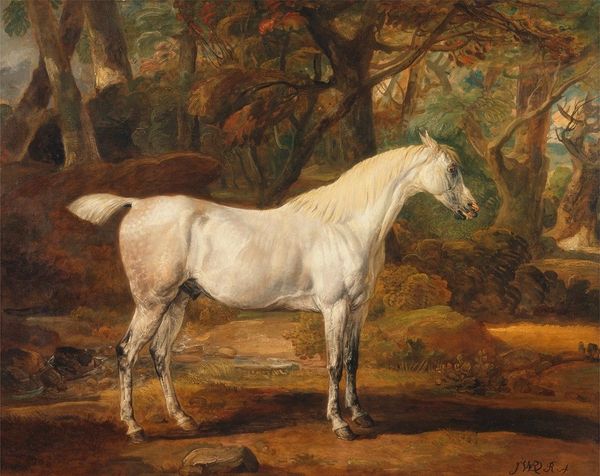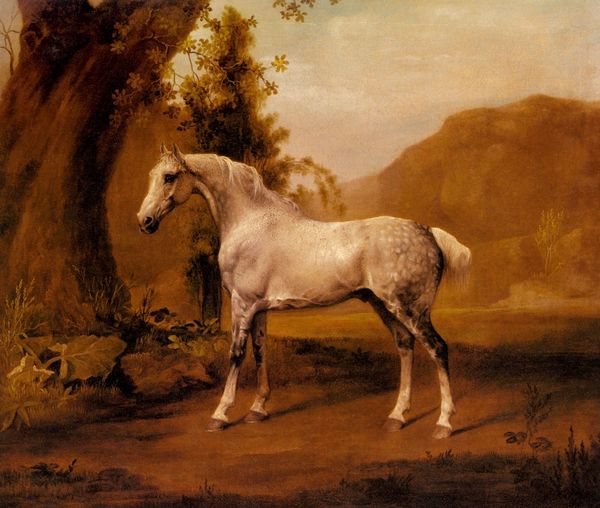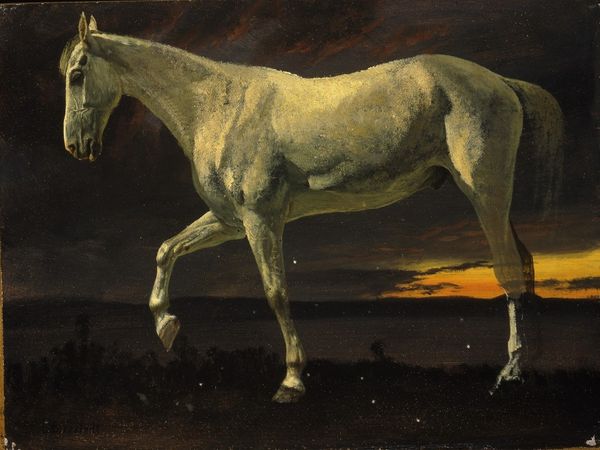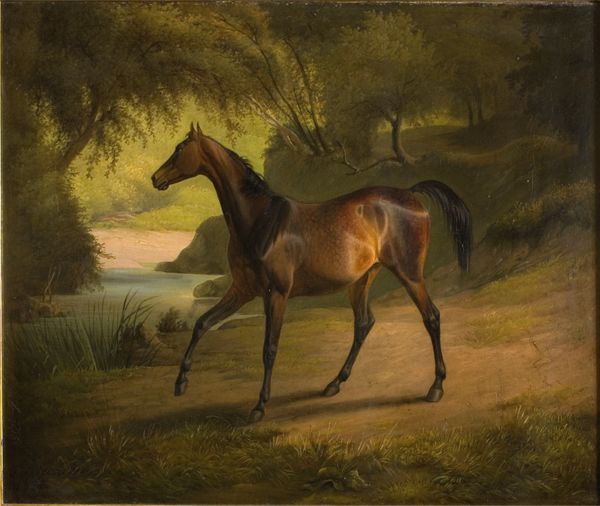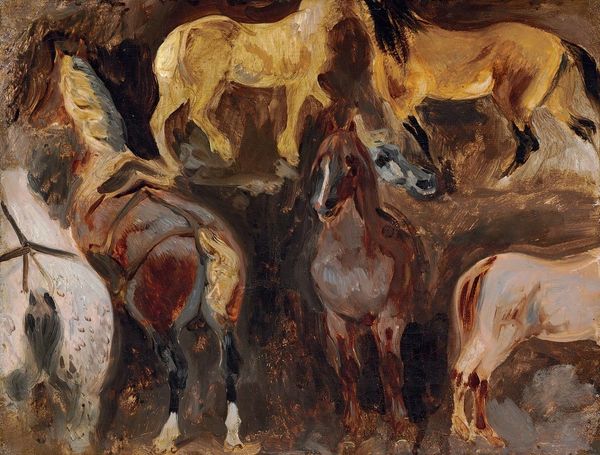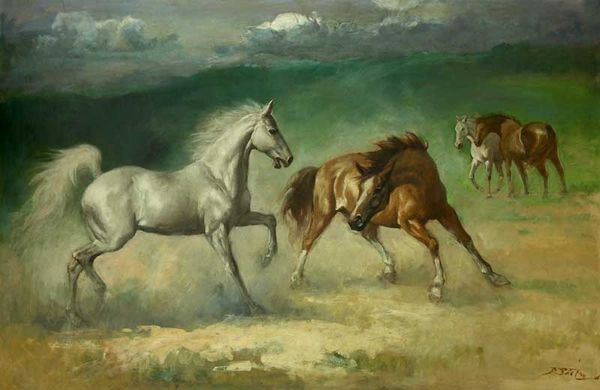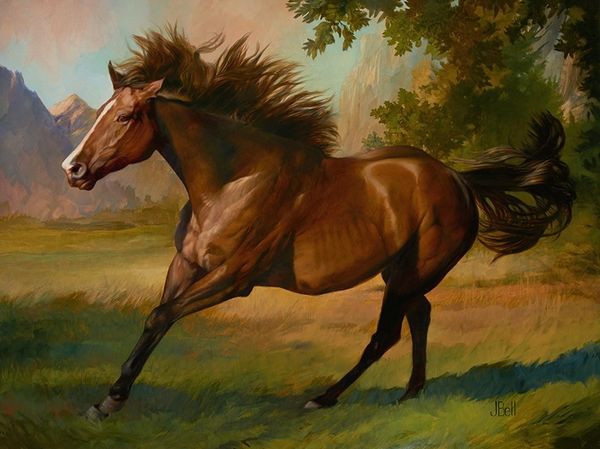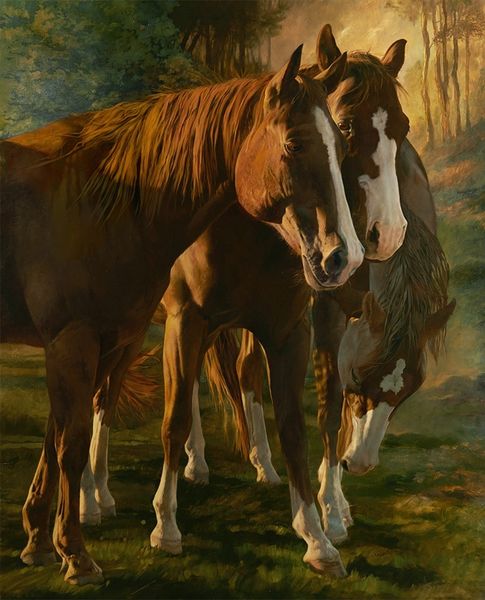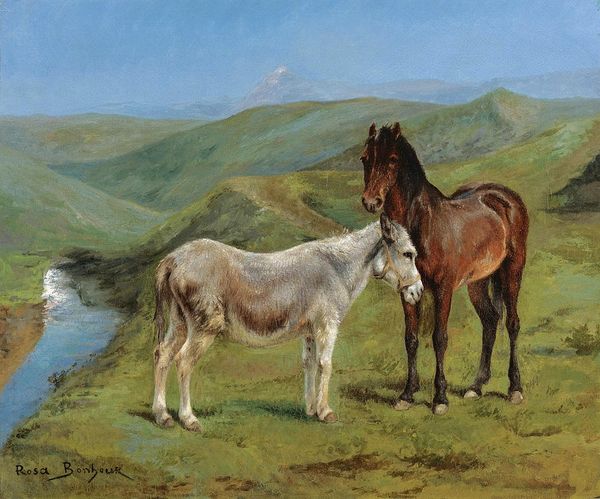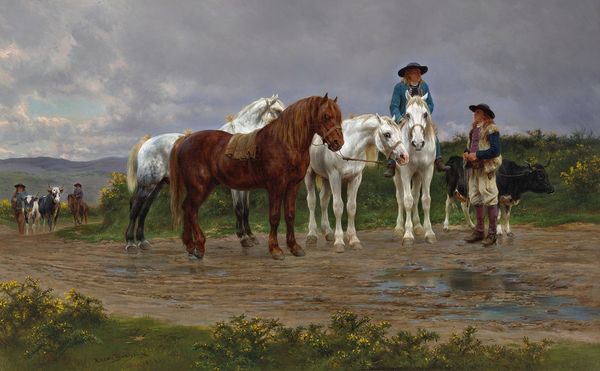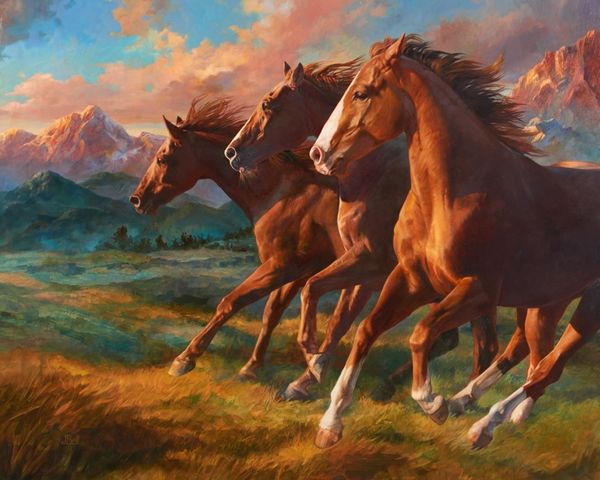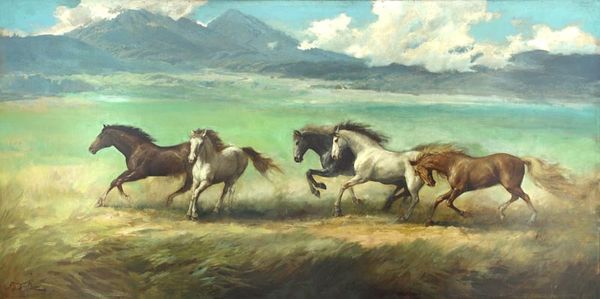
painting, oil-paint
#
animal
#
painting
#
oil-paint
#
landscape
#
oil painting
#
hudson-river-school
#
realism
Copyright: Public Domain: Artvee
Curator: So here we have Albert Bierstadt's "Study of Wild Horses." It appears to be an oil painting, most likely crafted during his explorations of the American West. Editor: It feels unfinished, yet strangely compelling. The colors are muted, almost monochromatic. The horses seem caught between two worlds, submerged yet present. I wonder about the oil-paint quality of Bierstadt's craft: could you speak to that? Curator: Bierstadt’s masterful use of light to give the horses such an incredible physical presence is really what draws you in. If you study the foreground, where the brown river reflects and obscures the bodies of the beasts, you’ll realize that the entire composition relies on materiality and illusion. Editor: And that muted palette...it isn’t what I expected. It suggests something somber. Horses, for Bierstadt, I assumed he was drawing from somewhere more robust? Did he use local materials, or have the colors imported, given how they fit into the grand-narrative of a Hudson-River School painter, like him? Curator: This piece feels more intimate than his grandiose landscapes, doesn’t it? Maybe it was intended as just that: a study of light, form, and the inherent quiet dignity of these animals. Considering Bierstadt's link with the Hudson-River School's fascination with capturing America's unique topography, this glimpse of something else gives insight into other things Bierstadt felt and experienced in the world outside the "picturesque." Editor: The social context in which this was made and exhibited is so essential! Did the Hudson River School see the "new Eden" through material wealth extraction or conservation efforts? It sounds like this piece might sit slightly outside the overall context. Curator: You’ve brought up an essential debate surrounding Bierstadt’s artistic choices. On one hand, his grand landscapes celebrated expansion and potential—a view that fueled industrial exploitation of resources; and on the other hand, it showed respect for nature's splendor which can fuel conservational efforts. I tend to feel he sits somewhere between. And again, here, his skill reminds you about beauty and the natural, not exploitation. Editor: This smaller work almost redeems the rest. Perhaps it can act as a crucial critique to any perceived support for exploitative practices found elsewhere. Food for thought. Thanks! Curator: An ever-present balancing act to observe. Thanks to you as well.
Comments
No comments
Be the first to comment and join the conversation on the ultimate creative platform.
